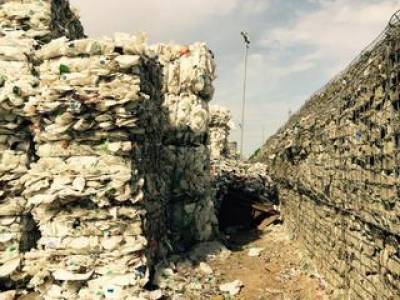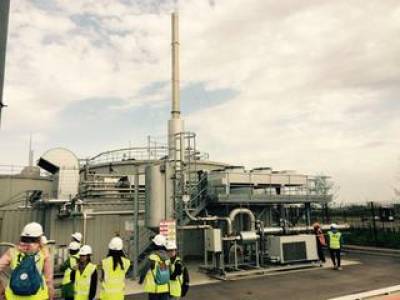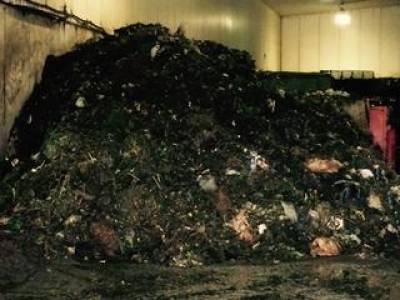Ben Croxford
(Views expressed are my own, v2 with some factual errors corrected thanks to Christopher Broster and some updated links Aug 2017, please contact if you find any more!)
Fascinating visit to TEG Anaerobic Digestion and In Vessel Composting Facility at Dagenham, now called East London Biogas Opco, 16th April 2015.
Comments and a few thoughts arising follow.

Organised by Teresa, about 8 of us visited.
Located on the London Sustainable Industries Park, Dagenham. Take EL2 bus from stop H outside Barking station get off at Closed Loop Recycling.
Site consists of 4 1/2 acres, facility requires about 8 employees to run it.
Their primary purpose is to take in food waste, ( a lot of it) up to 60,000 tonnes per annum, which they get paid for by weight and by type of waste.
From this they separate out the plastic, clean, and presumably pass on to nearby Closed Loop Recycling to deal with. They have now been taken over by Veolia to process plastic milk bottles (Summer 2017)

They then grind up the waste and feed to anaerobic digesters, adding water to get the correct moisture content; bacteria then convert some of the waste to biogas.
Biogas produced is about 55-60% methane, and some CO2 and a small amount of H2S. They add a bit of oxygen to feed the H2S scrubbing bacteria (biological desulphurisation)
And produce around 700m3 biogas per day (I think)
This in turn is used by a 1.5MW, 16 cylinder, noisy engine, running at 98% of its capacity, for 95% of the time (5% downtime for preventative maintenance)

Currently there is not enough gas storage or spare capacity in engine provision to be flexible about power pricing, so a revised business model could possibly find a more optimum solution for electricity generation.
Process generates heat, 1/3 of the heat is used on site for process heat, 2/3 available to sell, currently dumped, but GLA Environment team investigating options for reuse of heat.
Actual waste heat is presumably at exhaust temperature ~150C? they dilute to 99C as they don't want steam or higher temperature heat.
There remains therefore an option for district heating, selling higher temperature heat, other heat recovery from the engine, and then the use of absorption chillers in different climates to provide refrigeration for example.
Left overs from the anaerobic digestion turns to compost, but requires manual turning in a very smelly shed where the air gets sent to another anaerobic process to clean the odours. Odour control is an important condition for planning, which is why the odours are indoors!
Compost is sold as bulk soil conditioner to farmers.

The site gathers rainwater from about 1/3 site area (my estimate) which in total provides 60% of total water use (their estimate).
Note:
New energy from waste food facility Refood Dagenham has opened on the site (Summer 2017)
https://refood.co.uk/about-us/our-facilities/locations/dagenham-developments/
http://www.letsrecycle.com/news/latest-news/refood-dagenham-ad-facility/
 Close
Close


